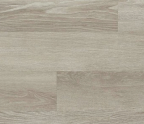ask This Old House

I am planning to buy a nailer for cabinetry and furniture projects, and to install shoe molding and other interior trim. Should I get a brad nailer or a finish nailer?
—GEORGE VINCENT, BOWIE, MD
TOH GENERAL CONTRACTOR TOM SILVA: For the work you’re describing, you definitely want a brad nailer. The thin, 18-gauge nails that brad nailers shoot have less chance of splitting or marring the wood surface than the thicker 15- or 16-gauge nails that finish nailers use, and brads leave a much smaller hole to fill. That can be a real advantage when installing small or delicate trim pieces like shoe or crown molding. Brads come as short as 5⁄8 inch for detail work, and as long as 2 inches. They don’t have the holding power of finish nails, but that usually doesn’t matter, because the pieces are typically glued before being nailed.
When no glue is needed, as with baseboards or crown molding, use a finish nailer.
For years, nailers have been pneumatic—powered by compressed air—making them lightweight and able to recover instantly after firing. But if you don’t own a compressor, a cordless nailer may be the way to go; the ones I’ve used are pretty nice. While they’re heavier, bulkier, and more expensive than pneumatic nailers, you don’t have to lug around an air hose and compressor when using them.
How to remove wallpaper
The wallpaper in our 1901 farmhouse is in good condition, but it’s too formal for our taste. What’s the best way to remove it without damaging the plaster walls?
—KELLY CYRUS, APPOMATTOX, VA
You’re lucky the wallpaper is stuck to plaster. Stripping
You’re reading a preview, subscribe to read more.
Start your free 30 days





